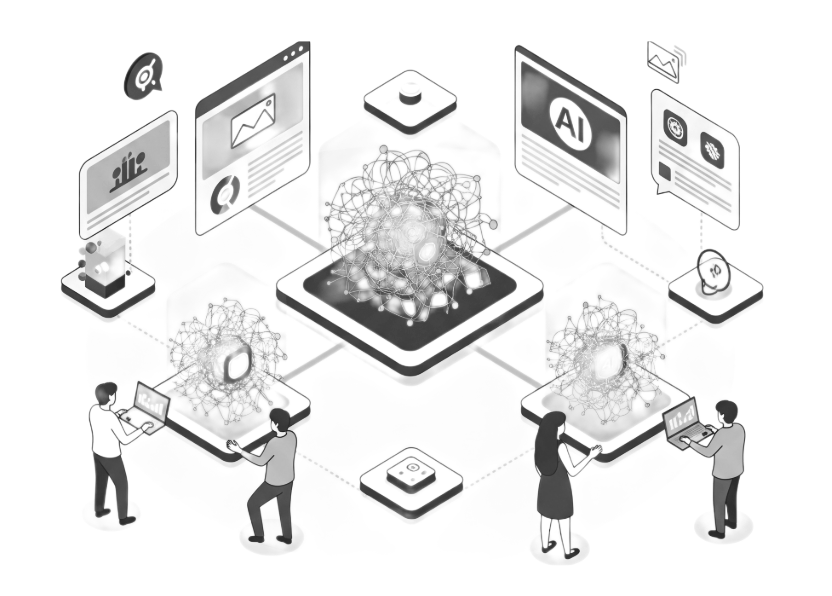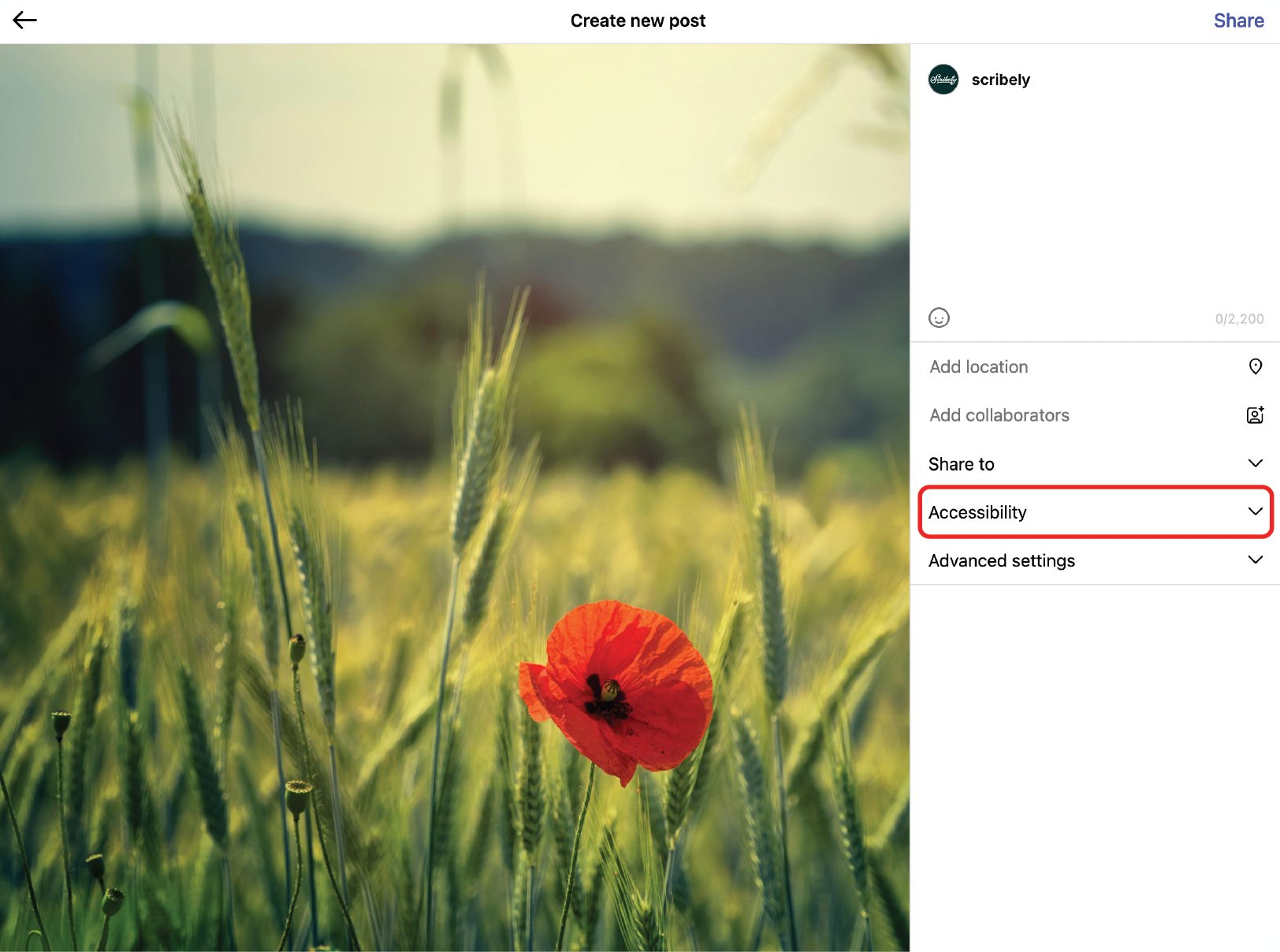Introduction
When large multimodal models became capable of generating image descriptions on demand, it created immediate tension within the accessibility community. For Scribely, a company founded on the belief that quality alt text requires human expertise, this new technology presented a fundamental challenge to its mission. This is the story of that inflection point, detailing how Scribely shifted to engineering quality into the core of digital infrastructure
In March 2023, the release of GPT-4 and other multimodal AI models sent a shockwave through the accessibility community. All of the sudden, promises of immediate access were being made given this powerful technology's endless capabilities. We were confronted with a new alt text author in AI. But its talent was unknown. As a company built entirely on the principle of quality image description, this new technology presented a question: Could AI alt text authoring meet the quality standards required for accessibility? And how, if at all, would Scribely adopt AI as a tool?
This was a turning point for Scribely. We began testing AI’s skills and exploring its true value for alt text creation. Through this research and development, Scribely found that AI could help us to transform from a service focused on writing descriptions on a project basis to a leader dedicated to engineering quality into the core of digital infrastructure.
Scribely’s CEO, Caroline Desrosiers, recently shared the story of this pivotal moment at the M-Enabling Summit 2025, detailing how a perceived technological threat became a powerful opportunity to redefine the company’s solutions while maintaining our commitment to high quality image description.
Scribely's AI Story
The following is an excerpt from Caroline’s talk at the M-Enabling 2025 conference:
“It’s March 2023. The week of the CSUN conference.
I walked in with a very clear picture of where AI stood in accessibility.
For years, technology companies had been trying to get machines to write alt text. And the results? Honestly, laughable. These systems would pick out a couple of objects in a picture and string them together into something vaguely sentence-like.
AI wasn’t close to humans. It treated description as transcription, not translation — not capturing why a visual moment matters.
So my expectations were set. I thought: AI can’t handle alt text. It’s too complex. Too human.
And then — OpenAI drops GPT-4. The first multimodal model. Suddenly, you could give an LLM both text and images. And it could respond.
And Be My Eyes is the first out of the gate, announcing they’ll use this technology to let blind users send an image to AI and get a description back. And the announcement lands right as CSUN kicks off.
So I show up at this conference, and everyone is asking me: “What’s Scribely going to do about this? Did AI just kill your business?”
To be honest, that really stung. I’d built a company on the idea that quality image descriptions matter. That you need experts, workflows, collaboration. And suddenly people were looking at me like—well, maybe none of that mattered anymore.
I worried about what would happen next. Organizations would grab this shiny new tool and give up on quality. We’d get the same old “better than nothing” approach. Random descriptions tacked on at the end. Errors. Hallucinations. Cheap fixes at scale.
When it comes to accessibility, I believe in way more than “better than nothing.” And I had to ask myself: is this where Scribely’s mission falls apart?
In the face of that large looming question, I realized Scribely’s purpose was more urgent than ever. Because if AI was going to be part of this future, someone needs to figure out how to use it responsibly — to protect the integrity of quality description.
And here’s the first truth I had to face: I needed help. As a solo founder, I’d already stretched myself to do a hundred things I wasn’t naturally good at. But now we were talking about AI, data infrastructure, context engineering. I needed a partner.
So in January 2024, I brought on Erin as Scribely’s CPO. And that was a turning point. Erin and I come from different vantage points, but we both believe in quality.
Together we started asking: how do we not just use AI, but push AI toward the quality we already know? How do we design workflows where AI helps but humans lead?
Writing bad alt text is easy. Writing good alt text is hard. It’s nuanced. It’s interpretive. And when you look at it closely, our old systems weren’t set up for that — not for humans, and definitely not for humans and machines working together.
We didn’t have the right tools. We didn’t have data infrastructure to capture the choices writers make. We didn’t have a way to define “quality” in a way AI could understand.
So that’s what we’re setting out to fix. Scribely today has the same mission of delivering quality image descriptions but we’re building new systems to get there. We’re finding the moments where AI can help, not as an autopilot, but as a co-author. We’re engineering context, feeding models the same style guides, facts, and audience signals our writers get, so the first draft is more than a guess. And we’re capturing human corrections, so the system learns over time.
And what happens when you do this work? You get infrastructure that can scale. You get workflows other teams can use. Marketing, search, product — they all benefit when descriptions are high-quality, reusable data.
That’s the real pivot we need to make. Not “AI solves everything.” Not “AI kills quality.” But a human-led, system-driven approach where AI becomes a partner, not a replacement.
So yes, GPT-4 felt like a threat at first. But what I see now is an opportunity. To stop treating alt text like a box to tick. We need to integrate alt text into the DNA of digital publishing. To make it not just about accessibility, but discoverability, SEO/AEO, AI readiness, and the connective tissue that makes images usable for humans and machines.
AI doesn’t end our work. It forces us to ask better questions: What does quality mean? Where do humans add value? How do we design systems so machines can meet us halfway?
If we can do that, if we can protect quality while embracing new tools. AI is not here to destroy image description. It is here to transform it.
The only question left is: will we choose to use it that way?” – Caroline Desrosiers, Founder & CEO, Scribely
Quality Becomes Infrastructure
Guided by our mission-driven focus on quality and the integration of AI, we are transforming image description into essential data infrastructure. When quality is integrated in from the start, the benefits extend far beyond compliance:
- Elevating Assets: High-quality image description data makes your visual assets fully searchable, processible, and measurable, opening up strategic opportunities.
- Future-Proofing: Alt text becomes a powerful data layer that makes your images AI-ready, boosting both discoverability (SEO/AEO) and systemic use. Quality descriptions strengthen the entire content ecosystem.
The emergence of AI was a defining moment for Scribely. Our work is a testament to our core belief to stay focused on quality while embracing new tools. AI doesn't diminish expertise, it simply transforms its impact. By embedding our expertise into scalable systems, we are ensuring that accessibility not only keeps pace with technology but becomes the intelligent infrastructure that drives the digital future.

Check out Scribely's 2024 eCommerce Report
Gain valuable insights into the state of accessibility for online shoppers and discover untapped potential for your business.
Read the ReportCite this Post
If you found this guide helpful, feel free to share it with your team or link back to this page to help others understand the importance of website accessibility.











.jpg)





.jpg)



























_edited_6x4-p-1080.jpeg)


